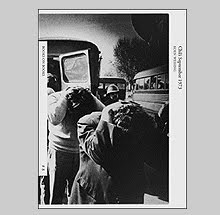Zwischenzeit by Roland Schneider

It’s the Titanic; The long hallway, doors left and right leading to ship-like narrow rooms. Doorknobs are modified, so no one can hang themselves. Over and over again the disturbing sound of shutting doors. After dusk, there is the echo of human voices in the hallways. It is much louder and far reaching than during the days. Again and again these shutting doors fall into their heavy locks until late after midnight. At 10 o’clock straight, the guards/nurses lock the unit doors. The only way to escape is by passing through the guarded hall where the nightly ‘special medicine handout’ takes place. At a table in the hallway they play cards. At 2 a.m. it’s quiet.
These words begin Roland Schneider’s book Zwischenzeit (Meanwhile). After suffering a mental breakdown, Roland Schneider was admitted to a psychiatric clinic near
Unlike many journalistic essays constructed to give a view of mental health, this one is from the perspective of the patient. As John Berger has suggested, in every act of looking there is an expectation of meaning, this set of pictures made within this tumultuous time in Schneider’s life is an exploration into meaning and being and awareness. This is perhaps art created for self preservation rather than for an audience.
On the walls, on the ceilings, everywhere: rebellion in the shape of open cracks. Like gaping wounds the walls grey mortar and the naked old brick underneath becomes visible. Everywhere destruction, everywhere. Shattered walls being eaten from countless morbid destinies. Disturbing traces of repeated misery. Day after day, night after night, year after year, life after life.
Nothing has changed here for decades. Not a single brush of fresh paint has touched these walls. Coffee has been spilled. When? Yesterday? Today? How many x- years ago? This disgusting brown color has tanned the wall irreversibly. Everything is chronically ill here. The disturbing condition of the rooms. The condition of the people The clock above the entrance door tick-tocks endlessly for nobody. Emptiness. Time stands still, while the grey brick &mortar walls crumble.
His lucidity is found not only in his descriptions of the clinic but also in the awareness of photography’s role in the descriptions of mentally illness as he questions his right to photograph his fellow patients.
What is it that allows me to photograph here? Who am I, standing in the midst of these people shooting photos? Who gives me the permission to ruthlessly photograph these humans (people), without asking them? But they wouldn't even know what I am asking. They only speak their own confused unintelligible language. Here and there some words resemble the ones I use. In what kind of position am I here? A madman just like them? A visitor able to move around and to leave whenever? A sort of tourist with camera? Or the voyeur who indulges in others harm?
What is interesting about these photographs is their avoidance of the “look” of mental illness. We have seen Claudio Edinger’s, Raymond Depardon’s or Eugene Richard’s images of mental illness. These are far different. Other than two photos of Schneider’s that feature a restraining chair, it may be difficult for the viewer to pin point what type of facility these images were made within. Schneider’s attention is paid to the more mundane in a way that the other photographers overlook or cannot see because it is not within their understanding. What he gives us is a look into a world that is fraught with obsessive observation of the seemingly mundane that serves as metaphor for those not held within the confines of the facility.

Special thanks again to Patrick Becker for his translation of the German text.
Book Available Here (Entre Temps)











